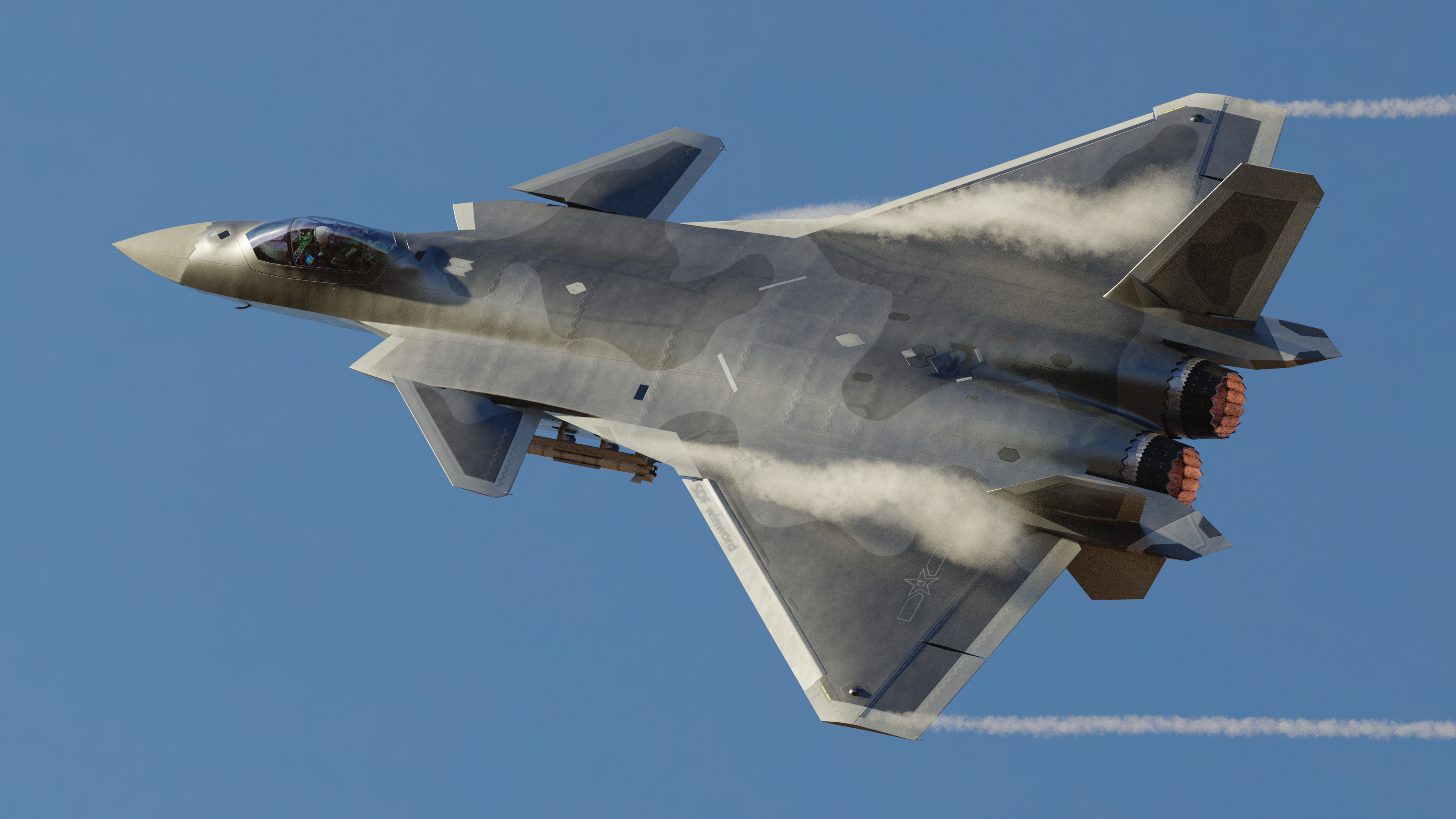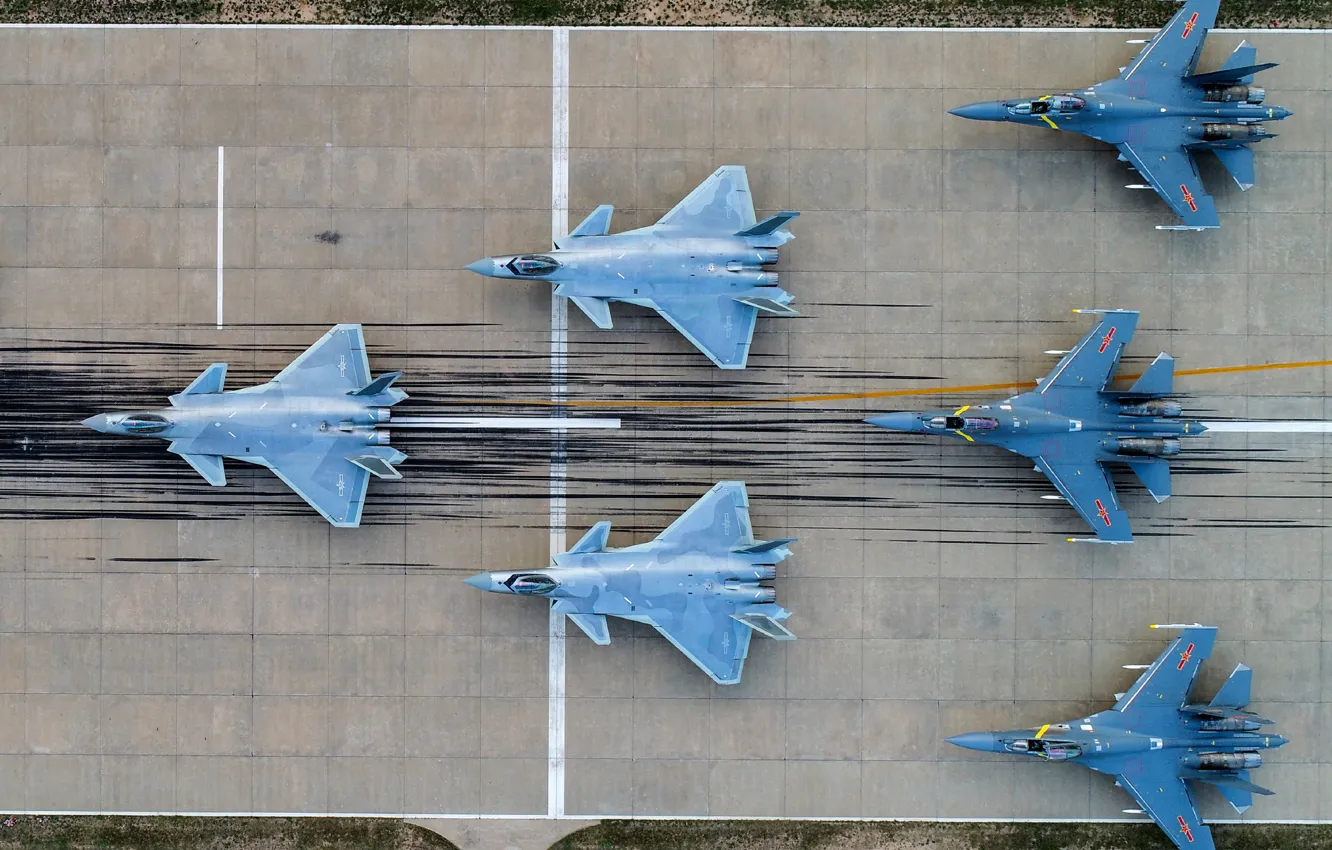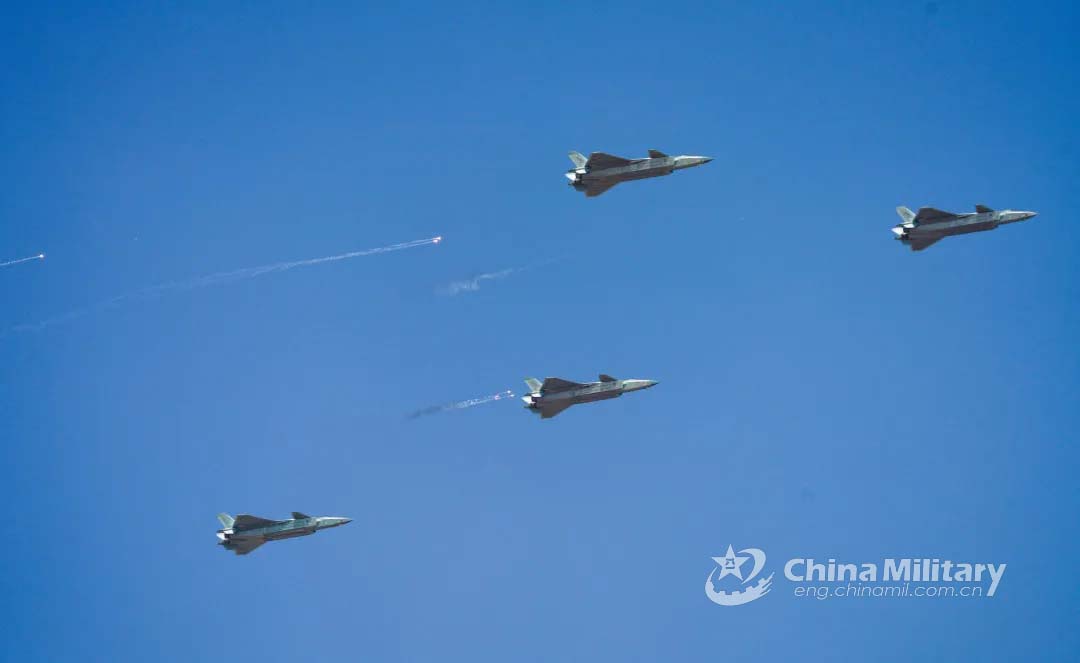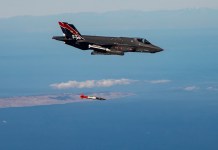China used its “most-advanced” J-20 stealth fighter in a military exercise earlier this month, a first for the “Mighty Dragon” since its formal induction into the PLA Air Force in 2017.
Powered By Stealth F-35 & F-16 Viper Jets, US Encircles China With ‘Biggest Fleet’ Of Advanced Aircraft
China and Russia held large-scale military exercises, Zapad/Interaction-2021 earlier this month at the Qingtongxia Combined Arms Tactical Training Base in Northwest China’s Ningxia Hui Autonomous Region.
Part of a series of rising diplomatic, strategic and therefore military convergence between the two countries, in response to what they perceive as ‘strategic encirclement’ and “containment” by the US, the two countries share an unprecedented level of solidarity.
While this is the first joint drill China has held with any other country after the Covid-19 outbreak, its military exercises with Russia have been frequent. There was the Vostok-2018, Tsentr-2019, and the Kavkaz-2020, which while still haven’t fostered the kind of interoperability that China has with Pakistan, has still effected a high degree of familiarity with each other’s systems and doctrines.

That the focus of the exercises was to combat terrorism, extremism, and separatism – which are the goals of the Shanghai Cooperation Organization (SCO) – and not military manoeuvers held in a conventional war with another country bears that the two are not yet entirely comfortable forming a military alliance, despite the threats they face from the United States.
US Delivers Its Most Powerful Air Dominance Fighter Jet To Qatar; Looks To Seal Multi-Billion Indian Deal Next
The Showstopper
However, the highlight of the event was China’s pride and joy, the J-20 ‘Mighty Dragon’ stealth fighter that appeared for the very first time in military drills. This has indicated a high degree of confidence in China’s military planners in the plane’s capabilities that serves to counter criticism about the jet’s many shortcomings.
Critics have pointed out that the twin-engine full stealth capable aircraft that began joining the People’s Liberation Army Air Force (PLAAF), is plagued by an underpowered engine, absence of thrust vectoring nozzles, and thereby poor maneuverability – unlike the French-origin Rafale.
Comparisons with the Rafale rate the J-20 poorly and many Indian Air Force (IAF) veterans said that the fighter jet had not seen combat experience. Moreover, the news of the IAF’s successful tracking of the J-20 in May 2018, was shown to have busted the hype around the plane’s stealth capabilities.

To this, some experts believed that the J-20 possibly used radar reflecting Luneburg Lens, seen on the rear underside, to enlarge and conceal its true radar cross-section during peacetime operations.
Even Lockheed Martin F-35s are known to activate their Luneburg Lens to hide their RCS during exercises.
No Retreat! Why Both India & China ‘Simply Refuse’ To Retire Their Vintage MiG-21 & J-7 Fighter Jets?
Besides, an aircraft’s radar detectability also depends on which direction it is being scanned from — whether from the front or side. Aviation experts believe the J-20 to be the stealthiest from the front-end, which means the Indian Su-30 might have scanned it from the side.
Why J-20 Received ‘Bad Reviews’
From an overall performance and kinematic capability standpoint, the J-20 does leave a lot of boxes un-ticked. It is a large aircraft; can’t carry a heavy payload, especially compared to the US Navy FA-18 Super Hornet Block 3; is not multirole capable since it has been possibly designed for air superiority; can’t operate from an aircraft carrier; is super-cruise incapable and has not been combat-tested.
Observers even pointed to how the J-20 was not seen to be able to perform gut-wrenching manoeuvers, as seen from the 2016 and 2018 Zhuhai air shows.
But this is assuming the J-20 was designed with the expressed purpose of competing with the US’s F/A-18 Super Hornet Block 3 or the F-22 Raptor or fight the exact way these planes in particular, or the US military in general, fight.

One of China’s thrust areas has been to develop missiles that outrange any of the US’s current missile systems. The Chinese YJ-18 anti-ship cruise missiles (range 540 km) and the PL-15 Beyond-Visual-Range air-to-air missile (200-300 km) also outrange the US’ 240-km range Harpoons and the 161-km AIM 190D. The Chinese DF-21D missile also poses a significant challenge to US aircraft carriers.
Being a designated stealth aircraft, the J-20 carries a mix of the ultra-long-range PL-15, and the short and the medium-range PL-10 and PL-15 missiles in lateral and under-fuselage bays.
Indian Fighter Jets To Be Equipped With Same Missiles As F-35 Lightning II, Eurofighter Typhoon
The J-20 also has an active electronically scanned array radar, a chin-mounted Electro-Optical Tracking System (EOTS) a passive infrared/electro-optical DAS 360-degree spherical camera system, and passive antennas for an advanced electronic support measure suite similar to the F-35’s AN/ASQ-239 system.
All these will certainly be connected to a data link that can receive information from China’s satellites too, besides other ground and air assets. One can also expect the J-20 to carry a very capable internal Electronic Warfare (EW) and Electronic Counter Measures (ECM) suite.
Moreover, going by J-20’s designer Yang Wei’s paper last year in Acta Aeronautica Astronautica Sinica, the concept of maneuverability is “outdated”.
J-20 Designer Exudes Confidence
According to Yang, the key lies in the pilot using information with these advanced devices, Artificial Intelligence (AI) with “extensive knowledge, sharp analysis, and sound decision-making”. AI’s role will be seen in each step of the original observe-orient-decide-act (OODA) loop in the air combat decision-making, with “intelligence becoming the deciding factor” in an “OODA 3.0”.
This also naturally extends to inhibiting the opponent’s ability to gain information using stealth and ECM.
This means that the Chinese don’t intend to use the J-20 in the way F-35s, FA-18 Super Hornets, F-22 Raptors, or IAF’s Rafales are to be employed.
Given its reliance on stealth, highly advanced avionics, and long-range missiles, the J-20 won’t be used in a close air dogfight, but rather from long ranges in a ‘sniping mode’ where it will knock out enemy aircraft from afar.
Satellite Image Shows ‘Chinese Predator’ Drones That Can Carry Hellfire-Type Missiles Stationed At Pakistani Airbase
These would be transport, air-to-air refueling planes or early-warning aircraft that cripple an air forces surveillance and logistics capability. This would have a direct bearing on its main fighters themselves.
This hints towards the Chinese military doctrine of “fighting its own wars” and not what the US or Indian militaries have been used to and something they will take time revamping given the decades-old institutionalization of such fighting styles.
- Follow EurAsian Times on Google News
- Views Personal




